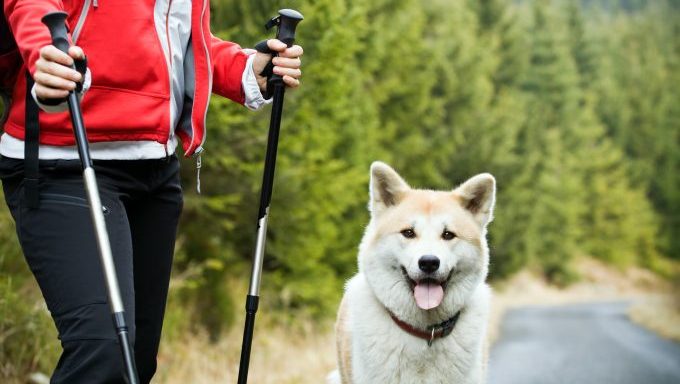
An “injured and exhausted” dog rescued after climbing the highest mountain in England is recovering from the ordeal, according to CNN.
Dog rescued from mountain
On Saturday at 6:25 p.m. local time, dog owners requested help with their Akita after scaling the 3,209-foot-high peak of the mountain. The dog was injured and refused to move. The Kenswick Mountain Rescue team responded and mobilized. A total of 13 rescuers partook in a mission to bring the 73-pound pup down from Scafell Pike in the Lake District national park.
The rescuers transferred the dog to a bag, then carried the canine down the mountain on a stretcher. They brought the dog to Seathwaite Farm.
“Despite being quite a large dog at 33kg it was a joy to carry such a relatively lightweight casualty. The casualty remained cool, calm and positively regal throughout,” the rescue team said in a statement.
Surprisingly, this is not the first time rescuers have had to help a dog in distress on the mountain. The mission, their 42nd this year, spanned a harrowing 4 hours 18 minutes.
Mountain climbing safety with dogs
When climbing mountains with your dog, it’s important to prioritize their safety along with your own. Here are a few quick safety tips to keep in mind:
Evaluate your dog’s fitness
Ensure that your dog is physically fit and healthy enough to handle the climb. Consult your veterinarian to determine if your dog is in good condition for such activities.
Research the trail
Before heading out, research the trail you plan to climb. Look for any specific rules, regulations, or restrictions regarding dogs. Choose a course suitable for your dog’s abilities and consider terrain, elevation gain, and weather conditions.
Use a leash and harness
Keep your dog on a leash throughout the hike to maintain control and prevent them from running off or encountering dangerous wildlife. Use a sturdy harness to provide better support and distribute pressure more evenly than a collar.
Bring enough water
Like humans, dogs must stay hydrated during physical activity. Carry enough water for you and your dog, and offer frequent breaks for them to drink. Consider a collapsible water bowl for convenience.
Protect their paws
Dogs’ paws are sensitive, so protect them from rough terrain, hot surfaces, sharp rocks, or abrasive surfaces by using paw wax or booties. Monitor their paws regularly during the hike for any signs of injury or discomfort.
Watch for signs of fatigue
Dogs may not always communicate when tired or overheated. Keep an eye on your dog’s behavior and watch for signs of exhaustion, such as excessive panting, lagging behind, or reluctance to continue. Take breaks as needed, and don’t push your dog beyond their limits.
Be mindful of wildlife and hazards
Mountains can be home to wildlife, including potentially dangerous animals. Keep your dog away from wildlife encounters to avoid conflicts or injuries. Additionally, be aware of any hazards on the trail, such as cliffs, steep drops, or loose rocks.
Pack essentials for your dog
Carry necessary supplies for your dog, including food, treats, waste bags, a first aid kit, and any medications they may need. Prepare for unexpected situations and be ready to attend to your dog’s needs during the climb.
Remember, each dog is unique, so adapt these tips to suit your specific dog’s needs. It’s always a good idea to consult your veterinarian and local hiking resources for additional guidance and safety recommendations.
ChatGPT assisted in the creation of this article.





